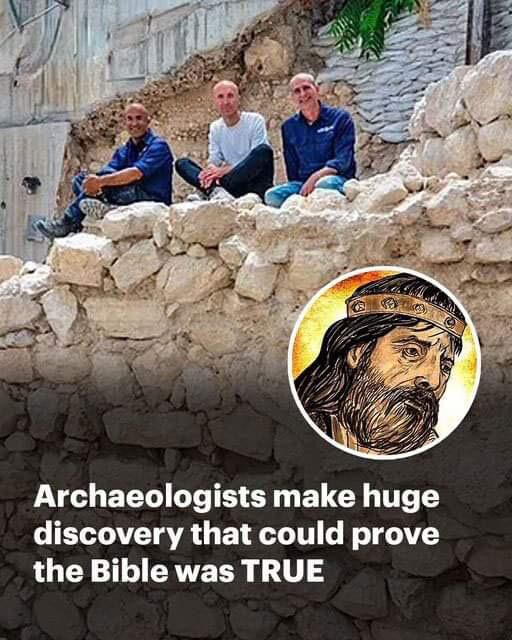For years, the credit for building a substantial portion of the wall in ancient Jerusalem’s center went to King Hezekiah of Judah. It was believed that he built it as a defensive measure against the Assyrian Empire after the fall of the Kingdom of Israel. However, new research conducted over the past decade has uncovered groundbreaking information that challenges this long-held belief.


Contrary to previous interpretations, it has been discovered that King Uzziah, Hezekiah’s great-grandfather, was the actual builder of the wall. This revelation came about as a result of extensive study and analysis, which indicated that the construction was a response to a significant earthquake, aligning with accounts found in the Bible.
Rethinking Historical Narratives Based on the Bible
Traditionally, the construction of the wall had been attributed to Hezekiah’s reign and his resistance against Sennacherib of Assyria. However, the recent research suggests that it was built soon after a major earthquake struck Jerusalem. This new information challenges previously held assumptions and necessitates a reevaluation of the city’s defense system and timeline.
Unveiling a Different Perspective from the Bible
The Old Testament, particularly the Second Book of Chronicles, provides valuable insights into King Uzziah’s efforts to fortify Jerusalem. The archaeological findings and descriptions of towers erected at strategic locations within the city align with the biblical account of its fortifications and infrastructural advancements.
Scientific Validation through Carbon Dating
Determining the age of the ancient wall involved the collaboration of the Israel Antiquities Authority (IAA), Tel Aviv University, and the Weizmann Institute of Science, utilizing advanced carbon-14 dating techniques. Overcoming challenges posed by fluctuations in atmospheric carbon levels during that period, researchers achieved more precise dating by incorporating information from ancient European tree rings.
This innovative approach has led to unprecedented accuracy in the field and provided invaluable insights into Jerusalem’s prehistoric past.
Unveiling Jerusalem’s Demographic Development
In addition to reevaluating the construction timeline of Jerusalem’s defenses, this study sheds light on its demographic and spatial growth. The findings suggest that internal growth within Judea played a significant role in expansion, challenging previous notions that attributed expansion primarily to external factors such as the influx of refugees after the Assyrian exile.
By overturning previous narratives, this paradigm shift emphasizes the influence of internal forces on Jerusalem’s planned growth. It deepens our understanding of Jerusalem’s importance during critical historical periods.
Researchers have also connected specific structures to biblical accounts, further enhancing our comprehension of the history of Judea from antiquity and the lasting impact of the city.
Insights into the Kingdom of Judah
These discoveries not only contribute to a better understanding of Jerusalem’s past but also contextualize the Kingdom of Judah within the wider ancient Near Eastern history. The kingdom faced various challenges throughout its existence, including the devastating Babylonian siege and destruction.
The research findings provide valuable insights into the resilience, cultural legacy, and enduring significance of the Kingdom of Judah.
In conclusion, the revelation about the true roots of Jerusalem’s ancient wall exemplifies the ongoing dialogue between biblical narratives and archaeological evidence. It enriches our understanding of the city’s vibrant history and solidifies its enduring place in the annals of time.
